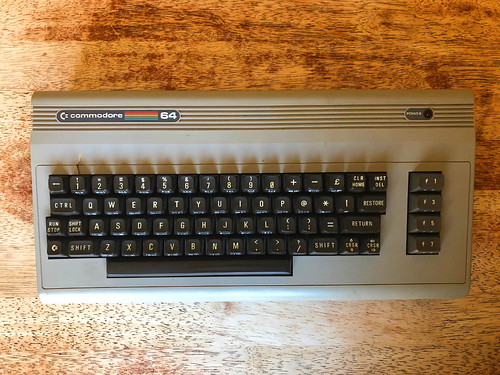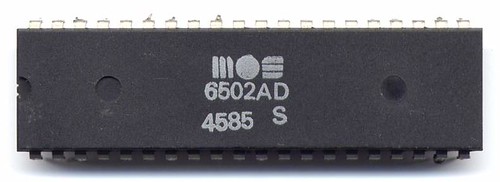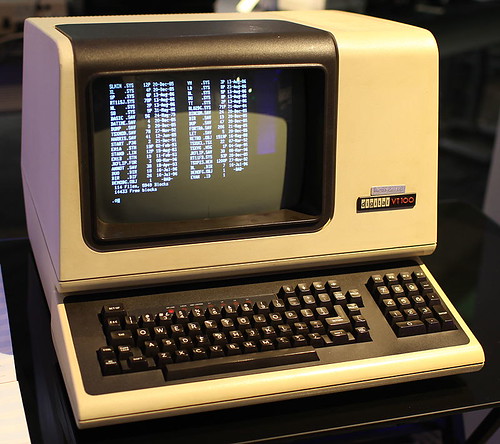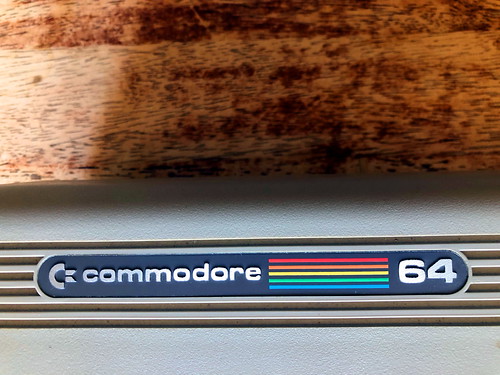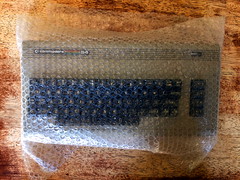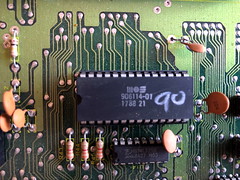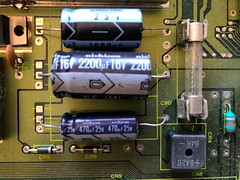❝ I skipped the C=64, but I did dabble in machine code and the 6502.
I don't miss the 80's, but I do miss 80's programming.
When the Commodore 64 was new on the market, I was hacking Fortran on punch cards, DEC VT100 terminals, writing graphics packages in Turbo Pascal on rows of brand new 80 column, 80286 IBM PCs in the computer lab. A computer, a language to program in and an editor. Simple, fast, fun.
I skipped the C=64, but I did dabble in 6502 machine code. This years hardware project in a nutshell: Source a simple 6502 based machine, make it work, write some interesting hacks.
The 6502
I had a Apple][e (6502, 48Kb) when I was living at home. It wasn't original. It was a clone, shipped to a Australia from Singapore in bits and assembled by a friend of my Dad who worked for ~~Collins Radio~~ Rockwell. This is the machine I hacked on 6502 machine code. I didn't get very far.
CcBySa3.0 by Dirk Oppelt.
I already have a few old machines. My first machine, a Sinclair ZX80 (Z80, 1Kb) is barely usable. I really don't want to fire it up in case it does catch fire. Some years ago I found a couple of working Apple Mac Classics. Both Macs boot (68000, 521Kb), but I need a ADB keyboard and mouse. Networking is non existant. So I want to aim squarly between the first 8—bit machines and the GUI machines of the 90's.
Pre—historic by todays standards, the middle of the 80's are a sweet spot for 8-bit machines. Pushing thirty and forty years of age, the biggest constraint is the age of the hardware. Chips die, capacitors burn out, parts become harder to find. Getting your hands on an old machine. Easier said than done.
What am I really looking for? ... a substitute for the DEC VT100
CcBy2.0 by Jason Scott.
There was something magical about working on the VT100. You turned it on and it booted almost instantly. There was a close integration between the keyboard and the monitor. There were few distractions, it was fast.
Use It For What?
❝ The real reason I want to use a C=64, I want a simple terminal on the Internet.
A monitor, a keyboard in a case with a 6502 processor. Pretty simple right? My choice could be any one of the following 8—bit era machines. The Apple II (expensive), Commodore VIC—20 (limited hardware), Oric computers (software), and BBC Micro (limited availability), probably not the Nintendo systems (games only), maybe Atari 8-bit computers (400 and 800. software issues) forget the arcade games. Then there is the sucessor the the Commodore VIC-20, the Commodore 64.
The real reason I want to use a C=64, I want a simple terminal on the Internet. Stupid right? But if you look at that VT100 above, and then picture back what I was doing in '85, I was using a terminal with limited processing power, talking to a mainframe.
Why A C=64?
A no—brainer (see translation):
The most successful consumer computer in the 1980's (lots of them.)
A growing hardware market (many suppliers selling parts.)
A lot of software (software you used to pay big dollars for, is free)
Accessible technical information (over time, significantly more tech information has been released)
Still cheap. (unlike the $1500 AUD Apple2 systems I see for sale.)
Competitive sellers market (re—sale value in some machines increasing)
PAL Vs NTSC
There is a lot of envy by our American cousins over the commonwealth choice of PAL television standard over NTSC when it comes to software. Commodore had a strong following in the United Kingdom and Europe. As a result more software was written for the PAL TV standard.
Where To Look?
If you had a spare 600 dollars in 1985 you could have bought the C=64 and kept it. If you are patient, lucky and persistent you can find neglected C=64 machines at second hand shops or waste—transfer stations. Another source of old machines, computer markets or retro clubs. Somebody may have a machine for sale. Still coming up bare? Unless you know of a relative or friend throwing out their old computers you will have to resort the Internet.
Then there is Ebay. Ruling out a NTSC C=64 means you miss out on bigger US market. So that leaves the local Australian or remote UK market. The biggest cost associated with the UK? Delivery. It is not uncommon for the delivery to exceed the purchase price.
This leaves Ebay in Australia. I could probably write a whole article on how to win competitive bidding and purchase things in Ebay, but it would be pretty boring.
Good luck.
Box Opening
Having purchased my machine it arrived four days later and here's what I found.
Observations
- Sourced from ebay.
- Case unopened.
- Board in good condition.
- Fuse intact.
- No modification on chips.
- No missing keys.
- Spacebar works (most fragile key).
- Every key on keyboard depresses.
- Yet to fire up with new power supply.
- Case has minor defect on above "1" key
- Defect inside case where vertical strut column meets keyboard.
- A common problem and IMOP a case design fault.
Technical
- Released 1985
- Manufactured UK
- Serial No. UKB1989361
- Board No. 250425
- CPU 6510 CBM 1985 (6502)
- SID 6581 CBM 0685 906114-01 1788 21 Rev. 3 (SID)
- RAM 8 x JAPAN4L3X HM4864AP-3 (RAM)
- VIC II PAL, shielding over VIC. (VIC II)
The machine is in better condition than I expected. All I really wanted was a usable case and keyboard, anything else is a bonus. While I have yet to test the board, I know the chances of blowing the major components increases with use (heat and age of chips). Some can be replaced, others are getting difficult. So a strategy of looking towards future replacement technology is a good option.
Plan
Here is the plan:
build the C=64 system and take advantage of new technology
start the machine with a reliable power supply
view output on a readable monitor
read / save software from mass storage
communicate with remote machines
machine is ultra reliable
TODO List
My TODO list of tasks in order to get from idea to usable system:
✔️ XXX Machine
❌ 020 AV (now) Video: build AV lead 8 pin horseshoe DIN to 3 x RCA (AUD $20 in parts)
- cf Composite video cable (AUD $10)
❌ 022 PRESERVE (now): chip heat sinks cf: copper heatsink (AUD $8) + compound (AUD $6)
❌ 100 POWER (2 months+) Power: new c64 power supply (AUD $100 + postage)
❌ 000 VERIFY if WORKING continue ELSE move directly to new motherboard.
❌ 240 STORAGE (6 months+) new mass storage technology
- cf SD2IEC V4.2 (AUD $90)
- cf 1541 Ultimate II+ (AUD $240)
❌ 080 COMMS (8 months+) new networks hardware cf 64NIC+: Crystal CS8900 10Mb Eth. (AUD $80)
❌ 200 AV MONITOR (9 months+) a new/old studio Sony Monitor would be nice (AUD $200+)
❌ 500 NEW MOTHERBOARD (1—1.5 year+) New c=64 board cf Ultimate64 (AUD $500)
The costs look around AUD $1.1K. Looks like I'll be saving up my bikkies.
References
[0] Updated
- 2019JAN1555:54.00
- 2019JAN1209:57.00
